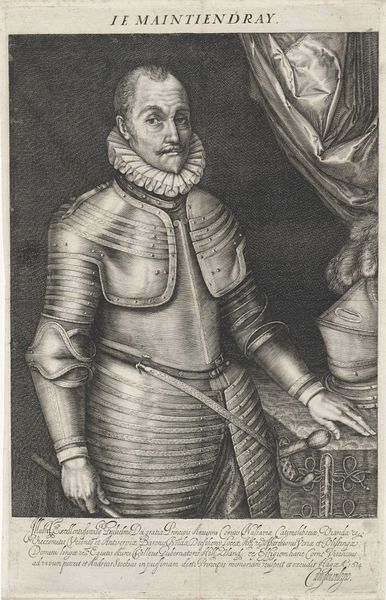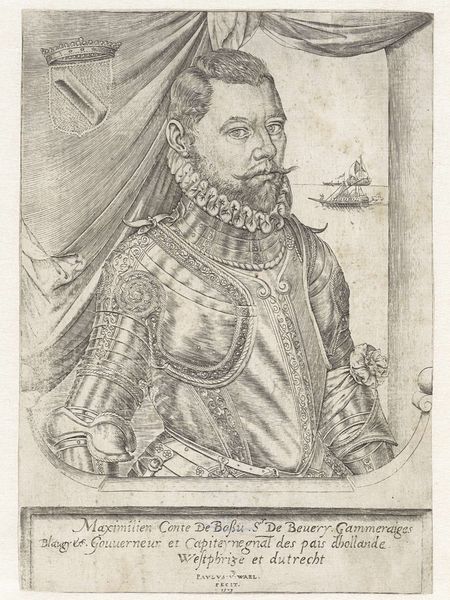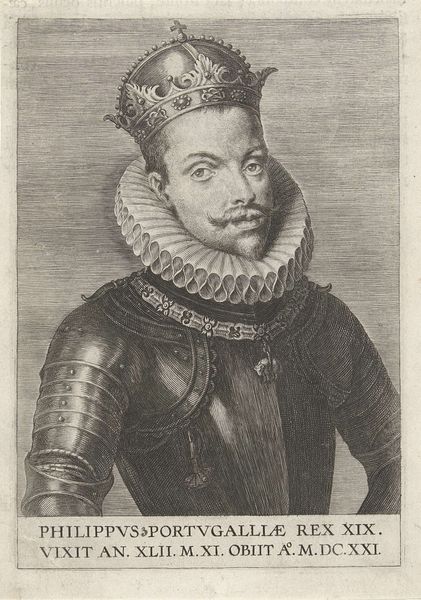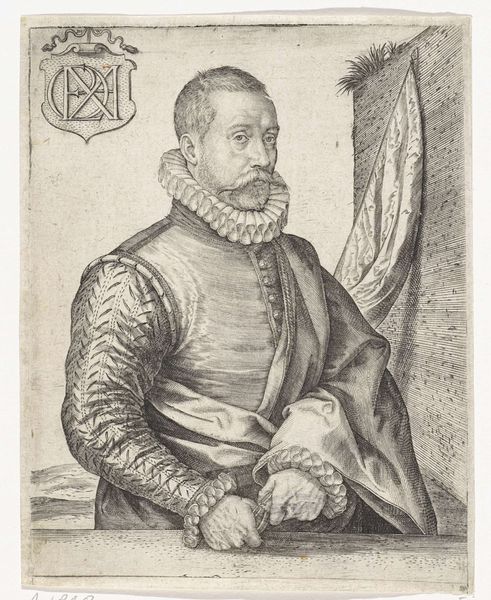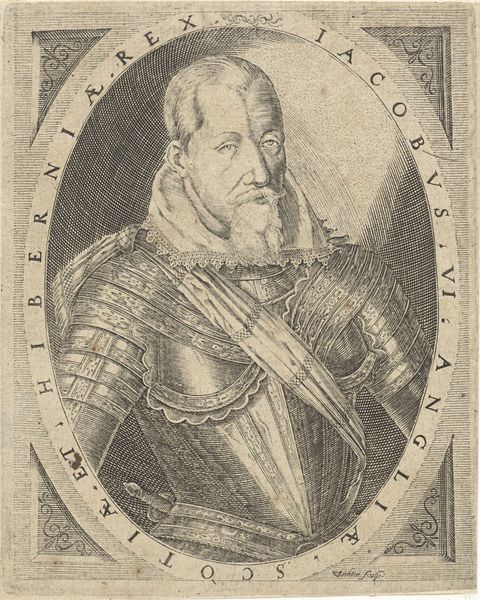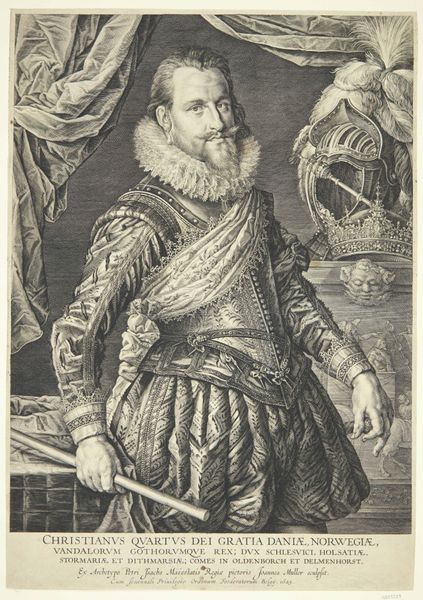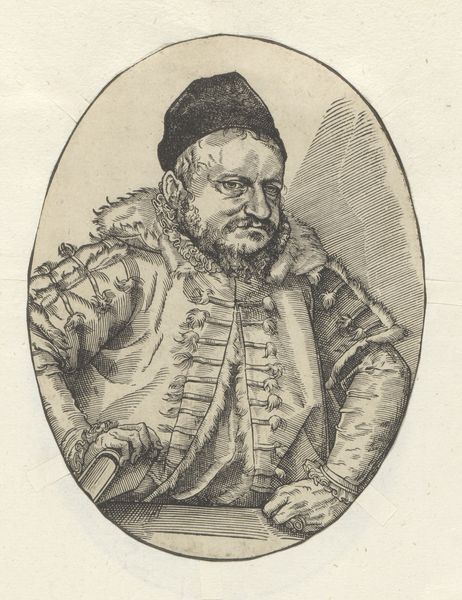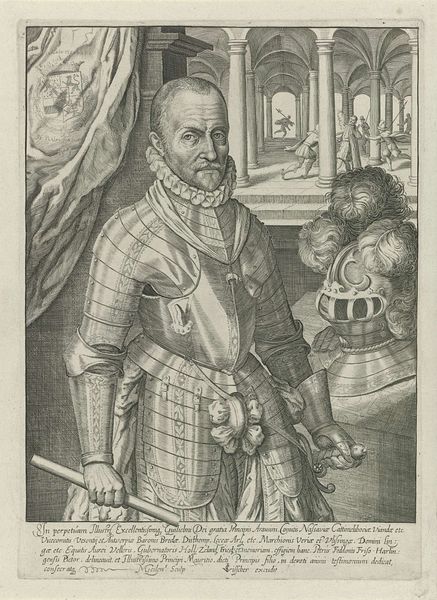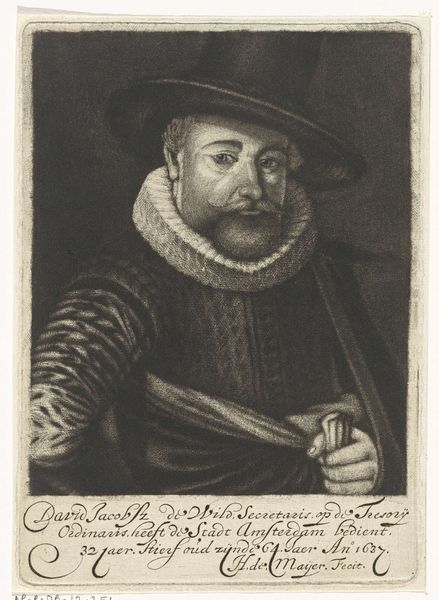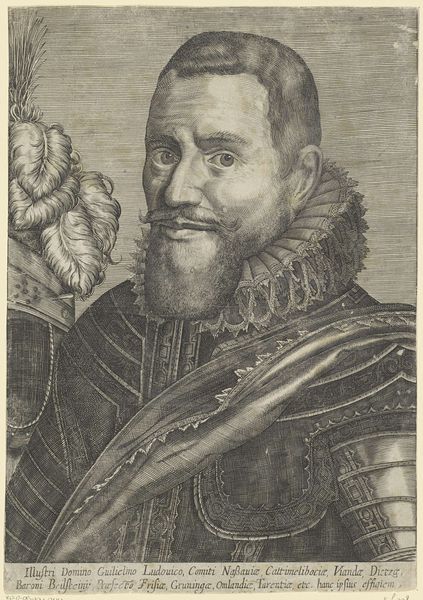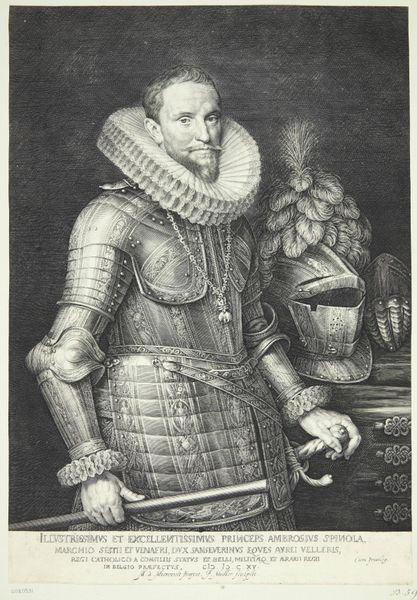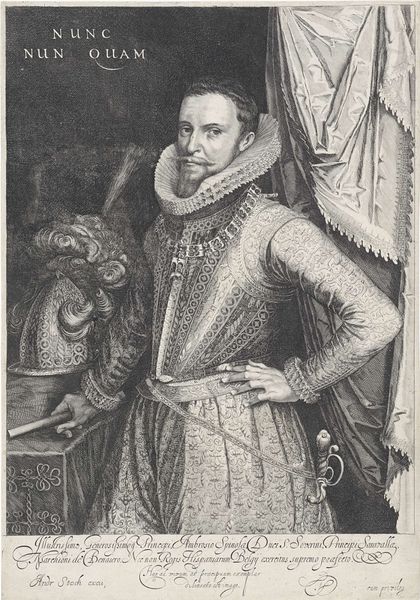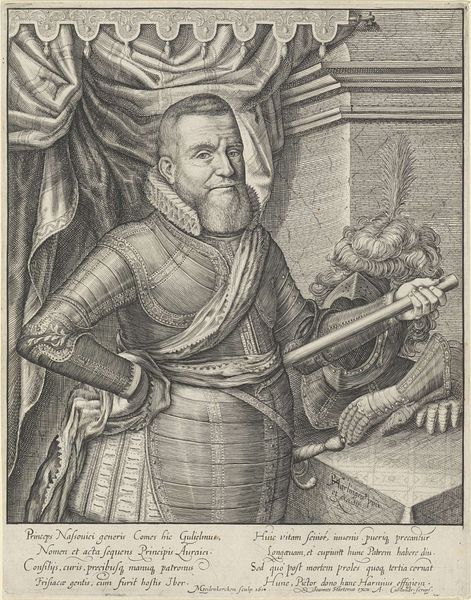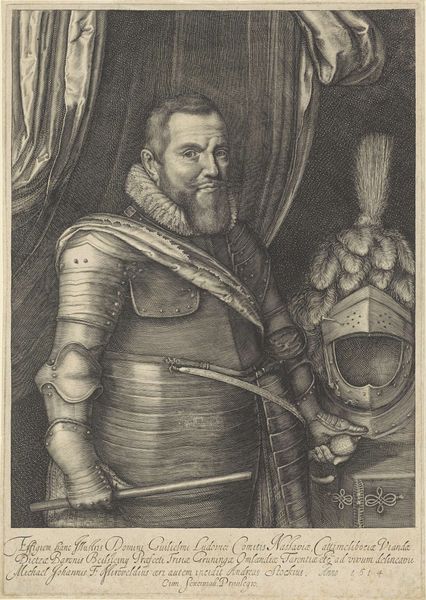
painting, oil-paint
#
portrait
#
baroque
#
dutch-golden-age
#
painting
#
oil-paint
#
figuration
#
history-painting
Dimensions: support height 119 cm, support width 93.9 cm, sight size height 117.6 cm, sight size width 92.3 cm, frame height 143.7 cm, frame width 118.5 cm
Copyright: Rijks Museum: Open Domain
Editor: Here we have an oil painting entitled "Portrait of Karel van der Hoeven," made sometime between 1605 and 1615 by an unknown artist. It seems like quite a straightforward, if competent, portrait, but there is also a feeling of darkness. How do you interpret this work? Curator: Focusing on the formal elements, note how the composition arranges the sitter, van der Hoeven, within a strict hierarchy of tones. Observe the stark contrast: the ivory-toned ruff sharply bisects the composition near its upper register. This framing emphasizes the geometric relationships, echoing in the man's visage and his dark beard. The texture of the work is quite striking as well. Do you notice any recurring geometric elements? Editor: Now that you mention it, the repeated rectangles around the yellow vest! And, his hands make the same shape holding the glove! Is this intentional? Curator: The consistency of the geometric vocabulary points toward a highly structured visual field. Consider the surface treatment—observe how light plays on the surfaces of the sitter's clothing, revealing the texture of the textiles versus the smooth quality of the metal. The contrast establishes visual hierarchy and rhythm. How would you define the colour composition in that context? Editor: I suppose it draws the eye upwards; the way the dark jacket absorbs light contrasting with the brightness of the ruff, bringing you to his face. So it's a sort of structured tonal climb, geometrically enforced? Curator: Precisely! And how does the darker colour surrounding it emphasize the geometric construction? This reveals the artist's meticulous control over both light and form. The picture plane acts almost like a geometric and tonal register. It also emphasizes the sitter's control through compositional dominance. Editor: That's a perspective I hadn’t considered. Thank you, looking closely at the structural elements certainly reframed my understanding! Curator: Indeed. Through disciplined observation, we begin to unpack the complexities of a seemingly direct image.
Comments
No comments
Be the first to comment and join the conversation on the ultimate creative platform.
